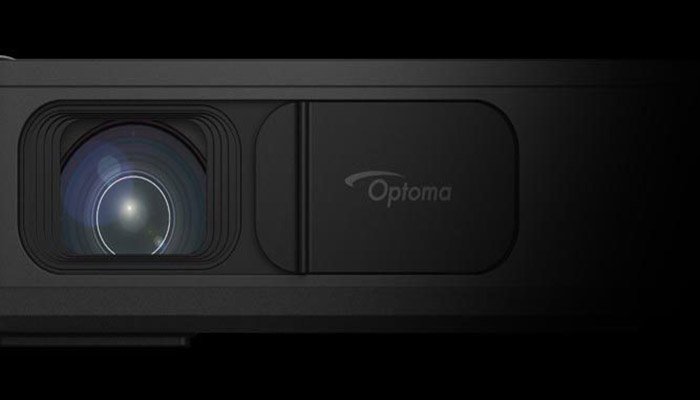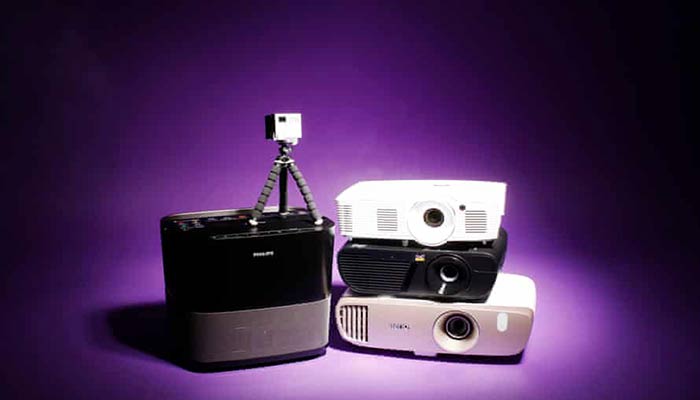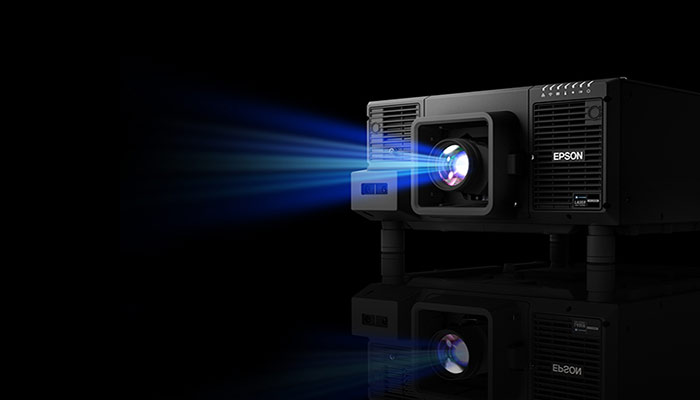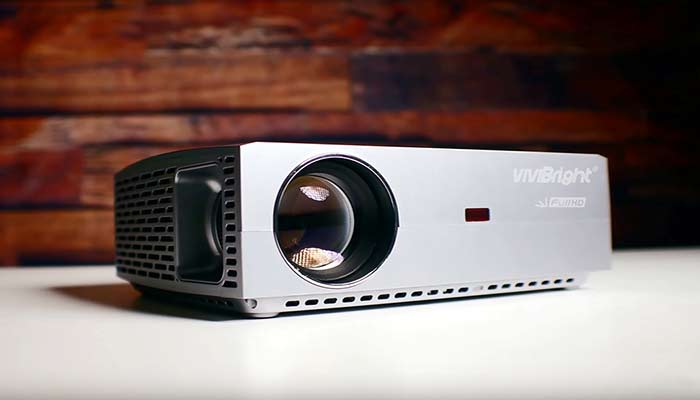Table of Contents
Whenever a consumer decides to buy a projector, they often get confused between the metric term of lux and lumens of the projector. Even though both the terms are related to brightness, the figure of each term can lead to a different brightness level. So before someone heads out to buy a projector, it is vital that they should have in-depth knowledge about various specifications.
With different variations of terms associated with features of projector, a consumer should know them properly to make their purchase worthwhile. Brightness is an essential part of a projector, and it is vital that you should know the different units of light involved with it.
Knowing about the terms (units) will help you make an informed decision and get the right brightness level based on your requirement. In this article, we will compare lux vs. lumens projector so that you should understand what brightness will suit you best.
Understanding Lux, Lumens, And ANSI Lumens
Before understanding the difference between lux, lumens, and ANSI lumens, it is crucial that you should know about them. Getting a proper idea about them will allow you to assess the brightness level when you look at the specification and understand which will suit you;
What is Lux?
When you look at the specification list of a projector, especially budget models, you will come across the term Lux associated with brightness. Lux is SI based unit that is used to measure brightness level, although it is not the standard unit.
It defines the amount of light produced on the screen and the not capability of producing brightness by the projector. Here one lux denotes one lumen per square meter, and by using the lux figure, you can judge the amount of visible light you will get.
Depending upon the ambient light, you can determine the brightness because it also tells you the intensity of illumination on the screen.
Lux may not be a common term used in defining the brightness level of a projector, but it tells you correctly the amount of brightness that a user will perceive. However, it is not highly accurate, and this is the reason only a few manufacturers use it to define the brightness of a projector.
What is Lumens?
Lumens is a standard term that is used for measuring the luminous flux or light produced by a projector. The luminous flux basically highlights the number of lights visible to the eye when you switch on the projector and project any content on the screen. In simple terms, lumens are the total measure of light that is used for producing an image.
It has become a universal term that is used by almost every manufacturer to depict the brightness-producing capability of their projectors. It is generally denoted by the term lm, and most of the projectors, whether budget or high-end, uses this term. Like lux, the higher the lumens figure better will be the brightness of an image.
However, there are various factors that affect the lumens of a projector. It is not always true that lumens are highly accurate because it only tells you the amount of brightness that can be produced by the light source. It doesn’t adequately tell you the actual intensity of light you will get when an image is shown.
What is ANSI Lumen?
ANSI lumens is similar to lumens, and it is also used for measuring luminous flux produced by the projector. ANSI is a legal industry term that depicts American National Standard Institute, and this institute devised this term to measure brightness more accurately.
The main reason behind the accuracy is that they test the projector extensively, and all the brightness levels are tested under different lighting conditions. Rather than highlighting the maximum brightness, this institute adds all the results and decides the accurate ANSI rating of the projector. This is the reason projector with ANSI lumens considered to be showcasing the actual brightness level.
Having a projector with a true ANSI rating, you can expect it to deliver outstanding performance in the most common light conditions. Projectors that don’t come with ANSI lumens are likely not indicating the actual brightness level of the projector. However, there are cheap projectors that come with fake ANSI lumens, and you shouldn’t trust them.
Now, we have understood all the terms; it is time to take a look at the differences;
Lux vs. Lumens
Lux vs. Lumens is probably a standard comparison that is evaluated by many buyers when they go out to buy a projector. Both lux and lumens determine the brightness of a projector, and they are also Si-based units. Some of the manufacturers use Lux for specifying the brightness; other brands prefer lumens to determine the luminosity.
However, lumens are much more prevalent in the projector industry instead of lux as the lumens figures indicate the brightness level in a better way. We are not saying that lux is not a popular unit but only a few projector models, mostly budget units, come associated with this Si-based unit.
Lumens basically indicate the measure of luminous flux or, in simple terms, the total amount of light that the source can produce per unit of time. The luminous flux measurement is vital for the projector because it highlights only the electromagnetic waves visible to our eye. The numerical figure associated with this unit tells the approximate number of packets the light source of the projector can deliver.
The higher the lumens, the better will be the brightness of the image and also the capability of the projector to battle against ambient light. However, lumens figures get highly affected by the surrounding ambient light. In a semi-lit room, you can’t expect your 1500 lumens projector to produce a bright image worthy of 1500 lumens. The accuracy of lumens is slightly better than lux because it tells you the actual capability of your projector.
When you compare lux vs. lumens projectors, you will find both lux and lumens are quite similar as they both measure the brightness level of the projector. However, lux measures the brightness quite differently, and it tells you the illuminance level based on the surface area. Basically, it also tells you the lumen capability of the projector but in terms of lumen per square meter.
Here lumens square meter tells the amount of incident light illuminating a surface that will be visible to the human eye. Unlike lumens, lux only tells you the luminous flux’s effect on a specific area, so it is not easy to judge the capability of the projector. It also gets primarily affected by the ambient light and various other factors, and this is the reason many people consider it less accurate than lumens.
A significant difference between lumens and lux is that lumens consider the human eye sensitivity when measuring the amount of light produced by the projector. But lux only tells how bright an incident light would be after it falls on the projector screen, and that too without considering the human eye sensitivity.
When you consider the brightness level mainly from the light source, the lumens figure remains the same without getting affected by the distance between projector and screen. However, lux fluctuates with the increase in distance between the projector and projector screen. Well, both the figures are essential for users when they decide to buy a projector, but it will be preferable to consider a projector having lumens to determine the brightness.
Lumens vs ANSI Lumens
Many users, especially first-time buyers, when deciding their projector they often get confused between lumens and ANSI lumens. As we have previously discussed, lumens define the brightness that can be produced by the projector to produce a bright image. It is an important aspect of a projector as it not only ensures bright images in various lighting conditions but also determines the visual quality.
However, a projector’s lumens is not highly accurate as it is not evaluated under different ambient light conditions. Even though it serves as a standard unit, there are many manufacturers who use fake lumens figures to up-sell their projector. There is hardly any strict regulation associated with lumens, and all the manufacturers calculate the lumens according to their own designated process.
On the other hand, ANSI lumens also tells you the brightness level produced by the projector, but it depicts the accurate figure. Many consumers often get confused by ANSI lumens as they both bear the same unit. ANSI is the full form of the American National Standard Institute, and this institute tests the projector in various lighting conditions to determine the lumens figure of a particular projector.
Since it is tested rigorously so it is highly accurate and would provide you the actual brightness level of the projector. Importantly, all the reputed brands use ANSI lumens because many customers prefer them over average lumens figures, and it enhances brand value.
However, you can’t expect ANSI lumens from a budget or cheap projectors as ensuring ANSI lumens is costly. Moreover, cheap projector manufacturers include lumen measures to produce an approximate brightness of their projector. Even older models usually don’t offer ANSI lumens measurement, and they usually come with lumens in their specifications.
So if you want to get the best visual performance from your projector, you should go for ANSI lumens as it is accurate and proven. Projector with ANSI lumens in their specification also depicts that it will offer optimum visual performance when you use them.
Which One Will Be Better For You?
All the terms, whether it is ANSI lumens, lumens or lux, is an essential feature of a projector as they determine the brightness level that you will get. ANSI lumens and lumens depict the brightness capability of the projector, whereas lux tells you how bright a particular surface will be.
Currently, most modern projector either offers ANSI lumens or lumens to showcase the brightness. However, there are numerous budget models that also use lux units to define the brightness level. So when it comes to deciding which unit will be better for you, we will suggest you get a projector showing brightness level in ANSI lumens.
Not only will it accurately tell you the exact brightness that will be produced by the light source, but it will also ensure optimum clarity. Knowing how much light will be produced by your projector will give you the flexibility to set them in the proper location and get the best visual experience possible.
There are many manufacturers, especially Chinese organizations, who double their lumens or lux rating as they are not organizations to verify it. But this is not the case with ANSI lumens as the brightness level of the projector is decided by the American National Standard Institute after rigorous testing.
Apart from being more accurate than lumens and lux, ANSI lumens help you to understand the actual performance level of the projector.
However, we aren’t saying that it will be hard to judge the brightness level based on lux and lumens, but they are slightly inaccurate. So the unit that will suit you entirely depends upon your requirement.
Conclusion
We hope we have been able to clear all the air of confusion between lux, lumens, and ANSI lumens and give you a fair idea about each unit. Even though it is not entirely correct to compare between lux and lumens of a projector, it is better to have a good idea about each luminance unit. Lux and lumens are related to each other in terms of brightness produced by a projector, but they refer to two different brightness levels.
So you should properly go through this guide before deciding on a projector. Some of the projectors will offer you ANSI lumens, while some include Lux in their specification list. Depending upon your requirement, setup, and lighting conditions, you should choose the brightness level and also the unit.
Related Article :









